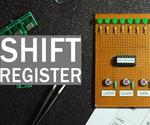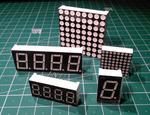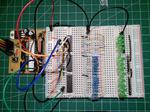Other

“Use the Arduino Due to control a large LED flat panel display. And the software to create and solve mazes on it Two years ago, I published a tutorial about building a 128 x 64 LED two color panel and …

“Recently, I was going through the pile of old projects which I had made when I had just got into electronics. I found a 24 x 6 LED matrix which was my first ‘complete’ project. A lot of messy wiring …

“This circuit takes the input of the shift register and outputs the binary representation to 4 LEDs and a 7-segment display. It incorporates a 4-bit bidirectional shift register, BCD to 7-segment display driver, a 7-segment common anode display, a line …

“Here I am going to show you how to make Digital clock using Arduino Uno (while final assembling I used Arduino Nano because of its small size). Instead of giving load on Arduino I am using Real Time Clock (RTC …

Sending information from the micro-controller to the user is extremely important to help in the interaction between the two. The use of 7 Segment LEDs is a common practice since they are simple to use devices that allow the sending …

The circuit presented today is a circuit built with 3 Shift Registers - 74HC595. This circuit allows controlling up to 24 outputs - in the case of LEDs and controlling them independently. A CSEduino was used to control the 24 outputs. Since …

